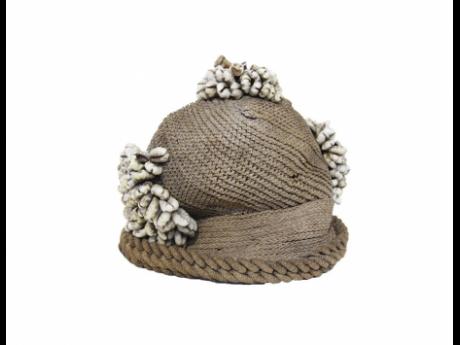A shell in the cap
Cowrie shells are a group of sea snails that range in size from small to large. These shells are famous the world over, with the most popular species of this shell known as the money cowrie or Monetaria moneta. The money cowrie are double-sided, egg-shaped, with a smooth and shiny exterior and are quite small, measuring up to three centimetres in length. The colour is generally pale, ranging from white to dirty beige.
These shells originated in the warm waters of the Indian and Pacific Oceans in large quantities, creating a booming shell industry on the Maldives islands. The shells eventually travelled by land and by sea and gradually spread and became the most commonly used means of payment in numerous regions, including Africa, Madagascar, the Red Sea and the Persian Gulf, the Maldives, eastern Polynesia, the Galapagos, Clipperton, and the Cocos islands off Central America, southern Japan, Midway and Hawaii, and northern New South Wales and Lord Howe Island.
Traders from the Arabian Peninsula introduced cowrie shells from India to markets in Africa, and they soon spread across the whole continent. The use of the shells grew more popular as the Portuguese, English, French, and Dutch traders and explorers saw the potential of this currency and started to accumulate great quantities of shells, which they used for trading slaves, gold, and anything else of value to them.
Choice of currency
In addition to the use of the shells by outsiders, they became a popular choice of currency due to their physical attributes as they are durable, handy, small, and lightweight, which makes them easy to handle and transport. They are also easily recognisable due to their specific shape and distinctive texture and colour, which made them perfect against forgery.
The other reason the shells became a popular choice of money was that many cultures believed that the shells were a symbol of fertility due to the rounded shape, which was reminiscent of a pregnant woman. Other African cultures used the shells as charms and divination tools to ward off the evil eye and to adorn the outfits of hunters and warriors, woven into sacred masks and costumes for dance ceremonies. Cowries were often used as ornamental beads and incorporated into jewellery, worn in the hair, and decorated statues, baskets, and other articles of clothing. The hat pictured here is a skull cap made from raffia and adorned with large clusters of cowrie shells. This cap was retrieved from the sunken city Port Royal during many of underwater excavations. This find indicates the presence of Africans in Port Royal during its heyday. While the owner or the exact origin of the hat remains unknown, its style is very reminiscent of those worn by Mbala chiefs of The Congo. These hats would have been used as a symbol of status and wealth due to the addition of cowrie shells and as part of the chiefs’ garment and regalia, according to Mary Jo Arnoldi and Christine Mullen Kreamer, editors of the book Crowning Achievements. African Arts of Dressing the Head. The Mbala number around 60,000 and live in the southwest of the Democratic Republic of The Congo. “Mbala” means “the red people,” and their fame is due primarily to the production of a red pigment made from the bark of the camwood tree, traded throughout Central Africa as tukula powder.
n Information courtesy, Sharifa Balfour, curator, National Museum West, Montego Bay.

